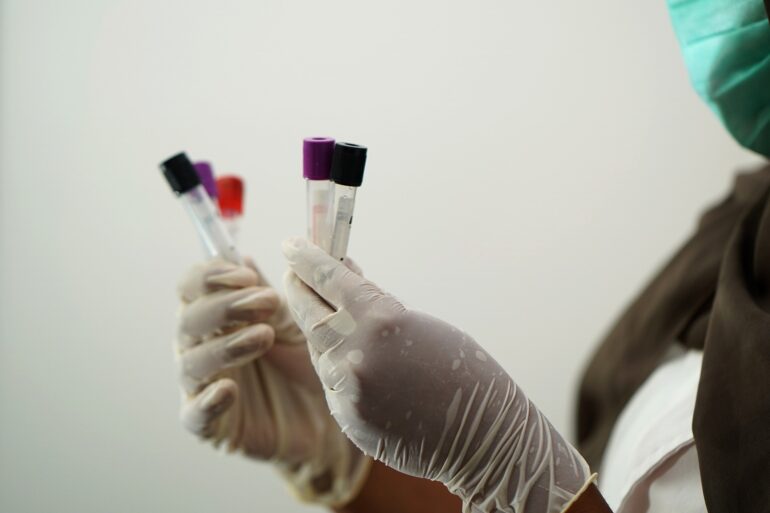TL;DR:
- AI and edge computing collaboration enable real-time disease detection with high accuracy.
- University of California, Santa Cruz researchers develop AI deep learning models for disease diagnostics.
- The AI model achieves a remarkable accuracy rate of 99.8 percent.
- The system utilizes a Google edge-computing device for efficient processing.
- Real-time detection and diagnostics are crucial in the context of the COVID-19 pandemic.
- The AI framework surpasses conventional methods by over 40 percent in performance.
- The technology has the potential for broader applications beyond pathogen detection.
- Ultra-fast point-of-care diagnostic devices can be developed using this AI-assisted framework.
- The AI deep neural network performs wavelet particle detection and short-time Fourier transform (STFT) analysis.
- The real-time AI diagnostic tool demonstrates excellent precision and sensitivity without amplification.
- The integration of AI and edge computing revolutionize disease diagnosis and paves the way for compact, low-cost diagnostic devices.
Main AI News:
The field of medicine, biotechnology, and healthcare can greatly benefit from the remarkable ability of artificial intelligence (AI) and machine learning to extract meaningful insights from complex data. In a groundbreaking study conducted by the University of California Santa Cruz (UC Santa Cruz), a team of researchers demonstrated the immense potential of AI deep learning and edge computing in real-time disease detection. By leveraging a Google edge-computing device, an AI model achieved an astounding accuracy rate of 99.8 percent.
Led by Holger Schmidt, Distinguished Professor of Electrical and Computer Engineering, along with Vahid Ganjalizadeh, Gopikrishnan G. Meena, Matthew A. Stott, and Aaron R. Hawkins, the UC Santa Cruz researchers successfully tackled the challenge of performing computationally demanding tasks on compact devices. Their neural network model, comprising only a few thousand parameters, exhibited exceptional performance in super high-resolution, multi-scale event detection and classification.
The significance of rapid and accurate pathogen detection and diagnostics has been underscored by the COVID-19 pandemic. Traditional nucleic acid analysis techniques often involve time-consuming amplification and cultivation processes lasting several hours. In contrast, the UC Santa Cruz team devised an AI-assisted framework that seamlessly integrates with a real-time multiplexed detection platform, offering high accuracy and efficiency.
The implications of this breakthrough extend beyond COVID-19 testing. The researchers envision the development of ultra-fast point-of-care devices for diagnostic applications, opening up new possibilities in the field of healthcare. By leveraging their AI deep neural network, which combines fast wavelet particle detection with short-time Fourier transform (STFT) analysis, on the Google Coral Dev Board, a powerful single-board computer, the team achieved real-time performance and outperformed conventional methods by over 40 percent based on key metrics.
Remarkably, the researchers emphasize that their AI framework is not limited to pathogen detection alone. Its versatility allows for broader applications in analyzing various time-series signals with distinct time signatures for different targets. With an impressive classification accuracy of 99.8 percent and the ability to perform amplification-free 3× multiplexing, the UC Santa Cruz team’s AI diagnostic tool offers rapid, precise results while maintaining cost-effectiveness and compactness.
The integration of AI and edge computing in real-time disease detection represents a pivotal advancement in the market. By enabling accurate and efficient point-of-care diagnostics, this innovative technology has the potential to revolutionize healthcare delivery, enhance patient outcomes, and drive the development of compact, low-cost diagnostic devices. The convergence of AI and edge computing is poised to reshape the landscape of disease diagnosis, propelling the industry toward a future of unprecedented efficiency and effectiveness.
Conlcusion:
The synergy between AI and edge computing in real-time disease detection represents a game-changing development in the market. The ability to accurately identify diseases with high precision and efficiency has significant implications for the healthcare industry and beyond. This breakthrough technology opens doors to the creation of ultra-fast point-of-care diagnostic devices, improving patient outcomes and revolutionizing healthcare delivery.
Furthermore, the integration of AI and edge computing paves the way for compact, cost-effective diagnostic solutions, enhancing accessibility and affordability. This transformative advancement is set to reshape the market, driving innovation and propelling the industry toward a future of advanced diagnostics and improved healthcare outcomes.

